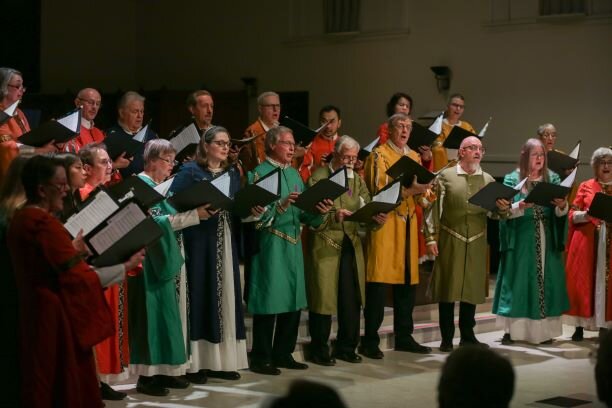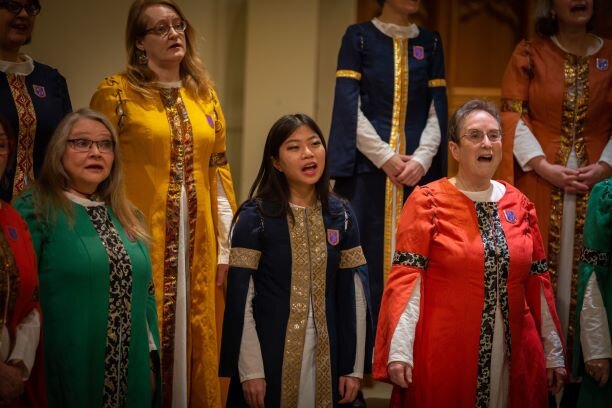Clothes Make The Man (and Everyone Else Too!)
Costumes in the Spirit of the Renaissance
When CRSP decided it was time for new costumes, a combination of in-house expertise, scholarship, research, and local businesses came together in a manner truly “in the spirit of the Renaissance.”
“I had an idea about how we would make this costume,” says alto, Brandis Purcell. A dressmaker with serious chops, Brandis also has a fondness for Renaissance costumery. Together with our own scholars, including Lorna Rowsell-Petti and Marcia Epstein, Brandis worked with the costume committee (Jennifer Farrand and Ian Kennedy) to find designs, colours, materials, and styles, for a new look that captured the Renaissance and blended with contemporary sensibilities, not to mention the exigencies of singing in a choir.
The design had to be easy to replicate, made from materials that were authentic to the period, but also comfortable and easy to care for, in colours that reflected Renaissance appetites. The committee’s research took them all over the city, settling finally on two local businesses and a local dressmaker to turn Brandis’s vision into reality.
A photograph of the choir kitted out in the new costumes showcases the rich mixture of reds, blues, greens and golds. “We found a wonderful linen/rayon blend at Olga’s Fabric Lane that looks like linen,” says Brandis, adding that 100% linen would be hard to care for. “In the day,” she continues, “people had other people to take care of their clothes for them.”
Singers who choose the women’s costume first don a cotton chemise or underdress (this would have been light wool in Renaissance times), then the linen overdress. Each overdress comes with two sets of removable sleeves (long and short) and are richly trimmed. Singers who choose the men’s costume wear a cotton blouse under a tunic in the same colours and variety of trims, with black pants.
The colours strike a balance between the exuberant colour combinations popular in Renaissance times, and contemporary sensibilities. Choir members were presented with two different palettes. “People voted on their favourites, and we had a discussion. People gravitated towards one particular palette,” says Brandis.
For the trim, the costume committee found “a wealth, a treasury of trims” at Bhatia Cloth House, which specializes in Indian fashions. They selected a great variety of trims that would go with the different colours.
Brandis designed the costumes by adapting existing patterns, though she drafted the removable sleeves herself. Then the costume committee worked closely with a dressmaker in High River to turn the visions into reality.
The costumes come closest in design, colour and spirit, to the clothing of jongleurs or troubadours, itinerant entertainers or “singers and players” of the Renaissance – appropriate attire for Calgary’s Renaissance Singers and Players of the 21st century.



